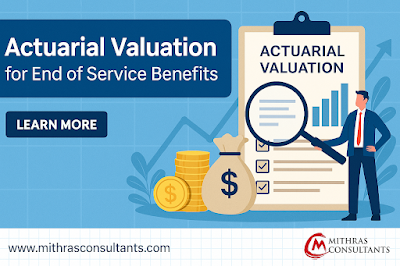Understanding End of Service Benefit & Actuarial Valuation: A Guide for Employers and HR Professionals

In today’s competitive business environment, attracting and retaining top talent goes beyond offering just a salary. Employee benefits, particularly long-term benefits like the End of Service Benefit (EOSB) , play a vital role in shaping a positive workplace culture. For companies operating in regions like the Middle East, where EOSB is mandatory, understanding how to manage these liabilities is crucial. This is where Actuarial Valuation comes in—a key financial tool for accurately estimating future obligations and maintaining compliance. In this blog, we’ll break down what EOSB is, why actuarial valuation is essential, and how partnering with experts like Mithras Consultants can help streamline this complex process. What is End of Service Benefit (EOSB)? End of Service Benefit is a statutory financial benefit provided to employees upon the termination of their employment, typically in regions like the UAE, Saudi Arabia, Qatar, and other GCC countries. It's mea...





